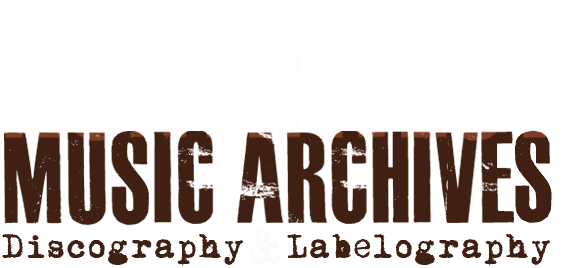
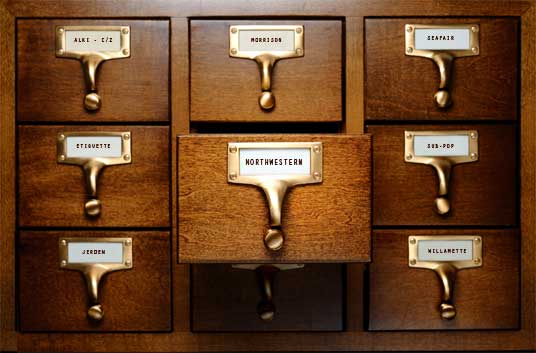
DAILY FLASH, The

The Daily Flash, courtesy Jon Keliehor Collection, photography by Jini Dellaccio
Homebase: Seattle, WA / Los Angeles, CA
Stats: 1965 -1968
Misc Notes:
ORIGINAL MEMBERS:
Steve Lalor (vocals, guitar)
Don MacAllister (vocals, bass)
Doug Hastings (vocals, lead guitar)
Jon Keliehor (drums)
LATER MEMBERS: Rick Dey (bass); Tony Dey (drums); Craig Tarwater (guitar); Ron Woods (drums).
21st Century Lineup: Steve Laor (vocals, guitars); Barry Curtis (vocals , guitars); Don Wilhelm (vocals, bass); Steve Peterson (vocals, drums).
ALSO SEE:
1.) Two Guitars, Bass, Drums & Darryl
2.) Bodine
3.) Rhinoceros
4.) Owl
"THE DAILY FLASH: SEATTLE's '60s FOLK-ROCK HEROES (1965-1968)"
by Peter Blecha
IN THE CULTURAL WHIRLWIND that was 1965-'67, the Daily Flash successfully blended American folk, blues, jazz, and early psychedelic rock elements into a great and unforgettable sound.
Conceived in Seattle in the summer of '65, the band consisted of the unlikely combination of: Don MacAllister, a mandolinist-turned-bassist and founding member of the Northwest's long renowned bluegrass trio, the Willow Creek Ramblers; Doug Hastings, a young northend hot-shot lead guitarist; Jon Keliehor, a serious classical percussionist; and Steve Lalor, a New York folk musician and member of the Driftwood Singers, house-band at San Francisco's North Beach folk mecca, the hungry i.
We should remember that Seattle was the center of a legendary '60s regional teen-dance scene. There were now-mythic legions of damned-near-identical rockin' combos with group members in matching garb, squealing rude saxophones, and Wurlitzer organs pounding out two and 1/2 chord tunes – all while doing bouncy kick-steps and mumbling something about "Louie Louie."
Well…the Daily Flash were different. They appeared with a ringing 12-string guitar, pure vocal harmonies, and unique interpretations of obscure folk tunes, Bob Dylan songs, Beatles hits, jazz covers, along with some interesting originals.

KRLA's Beat Magazine, August 13, 1966
Needless to say: they were not exactly welcomed with open arms by the established scene-makers. The group, however managed to attract a loose-knit following of old University beatniks, teenage runaways, coffee addicts, and student fringies. They quickly became Seattle's first alternative psychedelic band. Out of sheer necessity, the Flash resorted to guerilla marketing strategies, holding their own dances at various locations including the Painters’ and Socialist Workers’ halls, and hand-inking their own performance posters. At this time the Flash cut their first demo disc: a take on Dylan's "Let Me Die In My Footsteps," in the home of a folk musician friend.

The Daily Olympian, December 29, 1966
One night, while performing at a downtown hangout – The Door – an inspired local record distributor proposed the release of their first single, "Jack Of Diamond" / "Queen Jane Approximately." It was licensed by a big-time label – Parrott Records – but received little promotion outside of the Northwest. But, the record cultivated the interest of a high-powered music biz interest – the Greene & Stone talent agency who were then managing Sonny & Cher among other acts – who MacAllister had met during his bluegrass days at Los Angeles' Troubadour and Ice House rooms and the band scored a management deal.
In the spring of '66 the Flash loaded up their '48 Packard hearse and tripped off to Haight-Ashbury, playing the fledgling Avalon Ballroom, before heading on to LA. Settling in at the Tropicana Hotel, the band played numerous shows at the Whiskey A Go Go with bands that included the Byrds, the Sons of Adam, and Love. Over the following months they also performed in San Francisco, Seattle, New York, and Vancouver B.C. Canada –on bills with such stellar artists as Buffalo Springfield, Jefferson Airplane, Big Brother & the Holding Company, the Grateful Dead, Country Joe & the Fish, Quicksilver Messenger Service, Taj Mahal, the Seeds, Sopwith Camel, Moby Grape, and the Yardbirds.
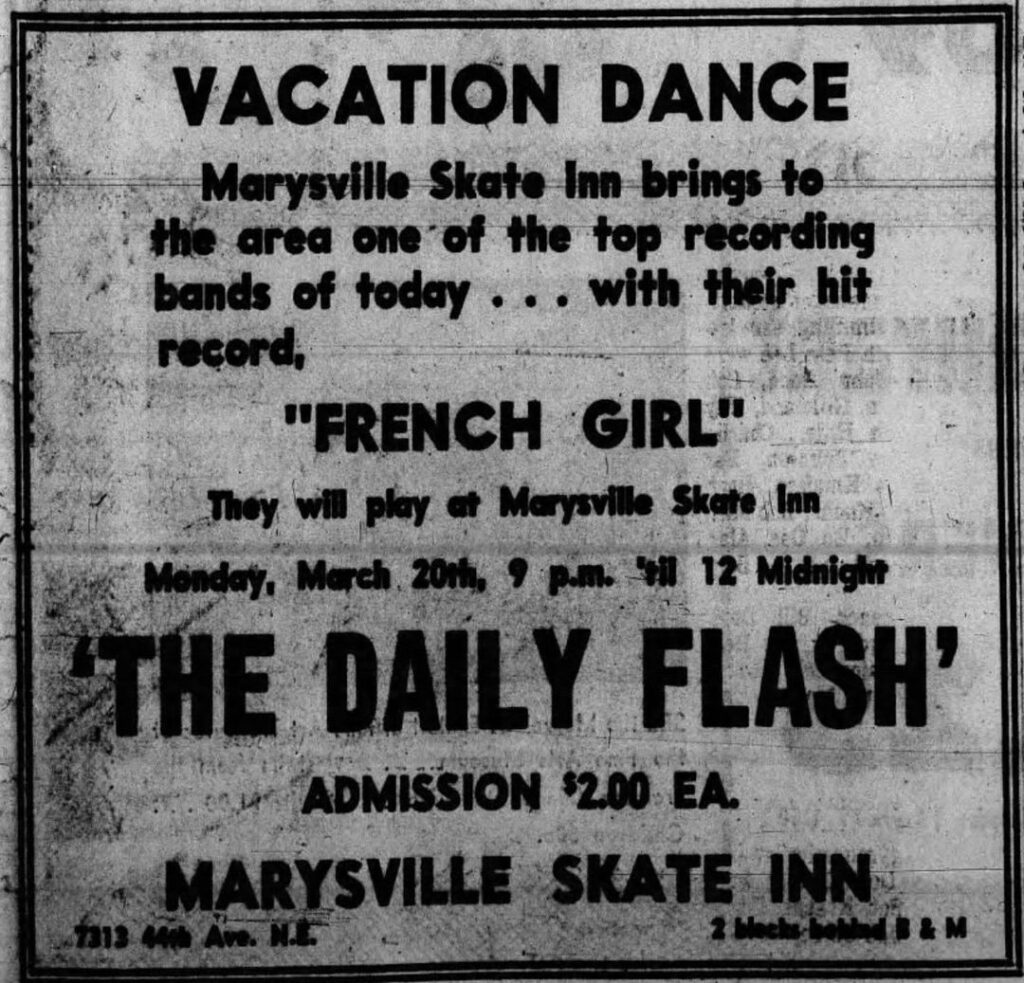
Everett Herald, 3.18.67
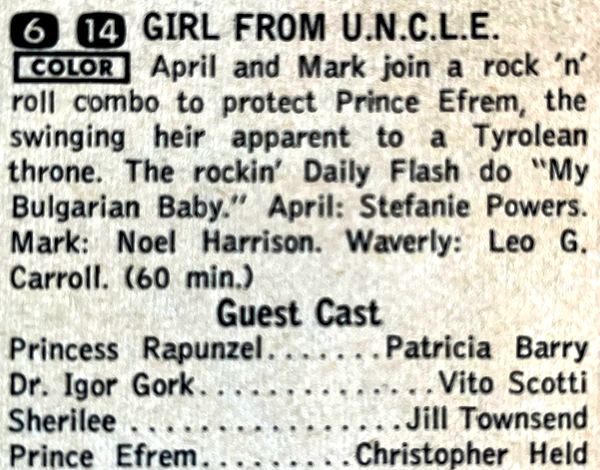 In Hollywood, the Flash found themselves making their television debut on the Boss City teen show – not to mention a bizarre appearance on a spy series, The Girl From U.N.C.L.E. It was in early 1967 that their second single – "French Girl" / "Green Rocky Road" – was released by a brand new big-time label: UNI Records (#5501). And although it became a genuine Top-40 regional hit back in the Northwest, the disc just didn't garner significant airplay nationwide. That was America's loss – but as the Flash wasn't building up the momentum that they rightly should have, their spirits began flagging. Keliehor – whose skills had earned him a role as The Doors' substitute drummer -- left in May '67 to pursue other endeavors and Hastings – who, likewise, filled in for Neil Young on occasion with Buffalo Springfield (his photo is included on the back-cover of their 1968 LP, Last Time Around – also moved on.
In Hollywood, the Flash found themselves making their television debut on the Boss City teen show – not to mention a bizarre appearance on a spy series, The Girl From U.N.C.L.E. It was in early 1967 that their second single – "French Girl" / "Green Rocky Road" – was released by a brand new big-time label: UNI Records (#5501). And although it became a genuine Top-40 regional hit back in the Northwest, the disc just didn't garner significant airplay nationwide. That was America's loss – but as the Flash wasn't building up the momentum that they rightly should have, their spirits began flagging. Keliehor – whose skills had earned him a role as The Doors' substitute drummer -- left in May '67 to pursue other endeavors and Hastings – who, likewise, filled in for Neil Young on occasion with Buffalo Springfield (his photo is included on the back-cover of their 1968 LP, Last Time Around – also moved on.
But the Daily Flash persevered, adding two Northwest teen band veterans: guitar whiz, Craig Tarwater (from Walla Walla's Randellas), and drummer Tony Dey (from the Wild Knights). This revamped Daily Flash visited Seattle during the Summer of Love, sharing the stage with the Grateful Dead, the Doors, and others. The Jet City had evolved: its historic Eagles Auditorium was now in full bloom with "flower children" dancing to regular shows by new local bands including the P.H. Phactor Jug Band, Magic Fern, Time Machine, and Crome Syrcus. Psychedelic light shows were held under the wary gaze of police, and the whole scene was covered by local underground papers including: The Helix, The Seer, the Acid Test, The Avatar, and the Oracle.
The Flash struggled on into the beginning of 1968, performing their final gigs with another Northwest pal, the Dynamics' former drum ace, Ron Woods. Finally the group disbanded. Hastings helped form Los Angeles' Rhinoceros later that year and played a multitude of other sessions before trading in rock for a career in geology. Sadly, after considerable session-work with noted L.A. bluesmen, MacAllister died of a drug overdose in November 1969.
That same year, Keliehor and Lalor formed a new group, Popcorn, which later changed names and released a country-rock album as Bodine (MGM #SE - 4652). Keliehor later moved to London to work on experimental percussion projects, and Lalor returned to the Northwest where, two decades later, he would revive the Daily Flash.
In hindsight, the Daily Flash simply represented the very best facet of the psychedelic folk-rock era, yet they remained a neglected group that somehow got lost in the shuffle of recording industry priorities. Those of us who loved their records or saw them live in action, however, will never forget the beauty of their work.
[Note: A version of this essay was originally published in the “Northwest Music Archives” column of Seattle’s The Rocket magazine back in September 1984. Then an edited version appeared as liner notes to the Daily Flash’s I Flash Daily album (Psycho 32), which was released in 1985 by the UK-based label, Psycho Records.]
Text copyright © 1984, 1985, 2014 by Peter Blecha.
MISC NOTES: Parrot 305 is the original issue of "Queen Jane." Parrot 308 substituted a new, slightly shorter, recording.
- 305 = 2:49
- 308 = 2:45
LOCATION:
RECORDING PERSONNEL:
RECORDING STUDIO:
RECORDING ENGINEER:
FORMAT: disc
SIZE: 7"
SPEED: 45 rpm
DISC NOTES:*
Disc number as printed on labels: 45- PAR - 305
"Jack Of Diamonds" Album Reissues:
1989 - 03 - 06 (Airplay Date). Page 1, Segment #3 on radio show compilation album. (Back Track BT 89 - 11 Westwood One Radio Networks Culver City, CA)
A-SIDE MATRIX:
1PD.)
1RA.) DC 4713
A-SIDE STAMPER CODE:
1PD.)
1RA.) DC 4713 ^61827 (etched)
A-SIDE COMPOSER: Bob Dylan
A-SIDE PUBLISHER: M. Whitmark & Sons (ASCAP)
B-SIDE MATRIX:
1PD.)
1RA.) DC 4714
B-SIDE STAMPER CODE:
1PD.)
1RA.) DC 4714 ^61827 - X (etched)
B-SIDE COMPOSER: Lalor
B-SIDE PUBLISHER: Burlington Music Corp. (ASCAP)
MISC NOTES: Parrot #308 substituted a new, slightly shorter, recording of "Queen Jane" than that on the original, Parrot #305.
- "Queen Jane" playing time on #305 = 2:49
- "Queen Jane" playing time on #308 = 2:451RA.) Monarch Records delta (^) numbers point toward this disc having been pressed April / May, 1966.
LOCATION:
RECORDING PERSONNEL:
RECORDING STUDIO:
RECORDING ENGINEER: "Doc" Siegel ("Queen Jane")
FORMAT: disc
SIZE: 7"
SPEED: 45 rpm
DISC NOTES:*
Disc # as printed on label: 45 - PAR - 308
Known Label Designs:
1P.) A - B promo label. Orange background. Parrot logo. Small black lettering PROMOTIONAL COPY lower right of spindle hole. No "Engineer" information.*
1P.) A - B promotional label. Orange background. Parrot logo. Small black lettering PROMOTIONAL COPY lower right of spindle hole below "Engineer" information.*|
1P.) A - B promotional label. Orange background. Parrot logo. Large black lettering PROMOTIONAL COPY NOT FOR SALE upper right of spindle hole. *
1RA.) A - B retail label. Black background. Parrot logo.
"Jack Of Diamonds" Album Reissues:
1989 - 03 - 06 (Airplay Date). Page 1, Segment #3 on radio show compilation album. (Back Track 89 - 11 Westwood One Radio Networks Culver City, CA)
A-SIDE MATRIX:
1P.)
1P.)
1P.)
1RA..) DC 4714
A-SIDE STAMPER CODE:
1P..)
1P.)
1P.)
1RA.) DC -4174 ^61827 - X (etched)
A-SIDE COMPOSER: Lalor - McAllister - Kelihor - Hastings
A-SIDE PUBLISHER: Ten - East (BMI)
B-SIDE MATRIX:
1P.)
1P.)
1P.)
1RA.) DC 4721
B-SIDE STAMPER CODE:
1P.)
1P.)
1P.)
1RA.) DC 4721 - RE DSCGBS ^61827 (etched)
B-SIDE COMPOSER: Bob Dylan
B-SIDE PUBLISHER: M. Witmark & Sons (ASCAP)
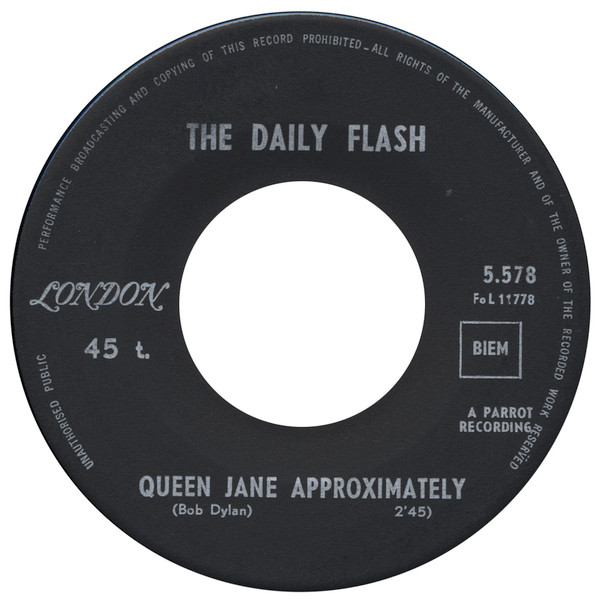 MISC NOTES: Belgium release of the American Parrot label 45.
MISC NOTES: Belgium release of the American Parrot label 45.
LOCATION:
RECORDING PERSONNEL:
RECORDING STUDIO:
RECORDING ENGINEER:
FORMAT: disc
SIZE: 7"
SPEED: 45 rpm
DISC NOTES: "A Parrot Recording"
A-SIDE MATRIX: FoL 11778
A-SIDE STAMPER CODE:
A-SIDE COMPOSER: Bob Dylan
B-SIDE MATRIX: FoL 11777
B-SIDE STAMPER CODE:
B-SIDE COMPOSER: Lalor - MacAllister -Kelihor - Hastings

MISC NOTES: An alternative release date of 1967-01-31 has been suggested.
LOCATION: Los Angeles, CA.
RECORDING PERSONNEL:
RECORDING STUDIO:
RECORDING ENGINEER:
FORMAT: disc
SIZE: 7"
SPEED: 45rpm
DISC NOTES:*
Known Label Designs:
1.) A - A promotional label. Yellow background with green and red swirl accents. Uni in Green. All other numerals and lettering black including PROMOTIONAL COPY NOT FOR SALE upper right of spindle hole. Disc # right center of spindle hole.
2.) A - B promotional label. Yellow background with green and red swirl accents UNI in green. All other numerals and lettering black. PROMOTIONAL COPY NOT FOR SALE upper right of spindle hole. Disc # right center of spindle hole: 5501*
3.) A - B retail label. As #2 above without promotional wording.
A-SIDE MATRIX:
1.) 001
2.)
3.)
A-SIDE STAMPER CODE:
1.) .001 T2
2.) .001 T1
3.)
A-SIDE COMPOSER: I. Tyson - S. Fricker
A-SIDE PUBLISHER: M. Witmark & Sons (ASCAP)
B-SIDE MATRIX:
1.) .001
2.) .001
3.)
B-SIDE STAMPER CODE:
1.)
2.) .001 T2
3.)
B-SIDE COMPOSER:
B-SIDE PUBLISHER:
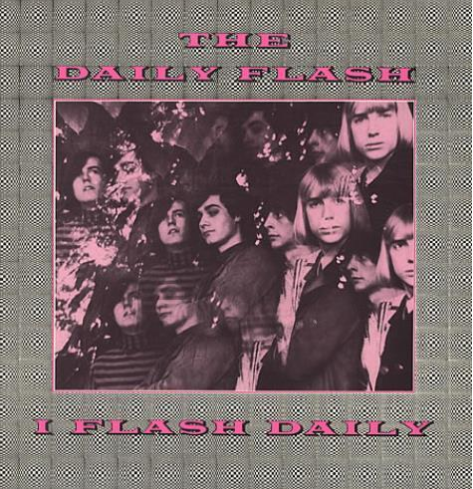 MISC NOTES: A 9-track compilation album including "Birdses" from an acetate disc, and two live tracks recorded in 1966 & 1967. Liner notes by Peter Blecha.
MISC NOTES: A 9-track compilation album including "Birdses" from an acetate disc, and two live tracks recorded in 1966 & 1967. Liner notes by Peter Blecha.
LOCATION:
RECORDING PERSONNEL:
RECORDING STUDIO:
RECORDING ENGINEER:
FORMAT: disc
SIZE: 12"
SPEED: 33 1/3 rpm
DISC NOTES:
A-SIDE MATRIX:
A-SIDE STAMPER CODE:
A-SIDE COMPOSER:
A-SIDE PUBLISHER:
B-SIDE MATRIX:
B-SIDE STAMPER CODE:
B-SIDE COMPOSER:
B-SIDE PUBLISHER:
MISC NOTES:
LOCATION:
RECORDING PERSONNEL:
RECORDING STUDIO:
RECORDING ENGINEER:
FORMAT: disc
SIZE: 12"
SPEED: 33 1/3rpm
DISC NOTES: Side Two, Track #5 on compilation LP, Nuggets Vol. 8 - The Northwest.
COMPOSER: Anderson
MISC NOTES:
LOCATION:
RECORDING PERSONNEL:
RECORDING STUDIO:
RECORDING ENGINEER:
FORMAT: disc
SIZE: 7"
SPEED: 45 rpm
DISC NOTES:
A-SIDE MATRIX:
A-SIDE STAMPER CODE:
A-SIDE COMPOSER:
A-SIDE PUBLISHER:
B-SIDE MATRIX:
B-SIDE STAMPER CODE:
B-SIDE COMPOSER:
B-SIDE PUBLISHER:
MISC NOTES: This disc is commonly referred to as the Jack of Diamonds EP -- because that song title is listed on it. In fact, that song does not appear on this release. Instead an entirely different song -- "The Bonnie Ship of Diamonds" -- is the first song on the A-side.
LOCATION:
RECORDING PERSONNEL:
RECORDING STUDIO:
RECORDING ENGINEER:
FORMAT: disc
SIZE: 7"
SPEED: 45 rpm
DISC NOTES:
A-SIDE MATRIX:
A-SIDE STAMPER CODE:
A-SIDE COMPOSER: Traditional / B. Roberts
A-SIDE PUBLISHER:
B-SIDE MATRIX:
B-SIDE STAMPER CODE:
B-SIDE COMPOSER: J. Corbitt / H. Ledbetter
B-SIDE PUBLISHER:
MISC NOTES: "Live two-track field recordings from February/March/April 2007
- Hard Times
- Play With Fire
- I'm Down
- French Girl
- Can't Find My Way Home
- Baby, Please Don't Go
- You've Got To Hide Your Love Away
- Long Tall Sally
- Matchbox
- Wrecking Ball
- Mighty Storm
- Darness, Darkness
- Wild Mountain Thyme
- For No One
- Rollin' and Tumblin;'
LOCATION: Seattle
RECORDING PERSONNEL: Steve Lalor (guitars, vocals); Barry Curtis (keys, guitars, vocals); Don Wilhelm (bass, vocals); Steve Peterson (drums).
RECORDING STUDIO: Highliner Pub / Fisherman's Wharf
RECORDING ENGINEER: Craig Bystrom
FORMAT: compact disc
DISC NOTES:
MISC NOTES: One of 9 songs included on the Mystery of Ron Davies tribute album.
LOCATION:
RECORDING PERSONNEL:
RECORDING STUDIO:
RECORDING ENGINEER:
FORMAT: CD
DISC NOTES:
COMPOSER: Ron Davies
MISC NOTES:
- Amazing House
- Violets of Dawn
- Leave Me Alone
- Twin Bridges
- Backbeat Music
- Paradise
- It's You Alone
- Suzanna
- Road
- But for Your Love
- Forever to Love
- Faithful Man
- I Don't Want to Remember You
LOCATION:
RECORDING PERSONNEL: Steve Lalor (Vocals / guitar); Barry Curtis (guitar / vocals); Don Wilhelm (bass / vocals); Steve Peterson (drums).
RECORDING STUDIO:
RECORDING ENGINEER:
FORMAT: compact disc
DISC NOTES:
A-SIDE MATRIX:
A-SIDE STAMPER CODE:
A-SIDE COMPOSER:
A-SIDE PUBLISHER:
B-SIDE MATRIX:
B-SIDE STAMPER CODE:
B-SIDE COMPOSER:
B-SIDE PUBLISHER: